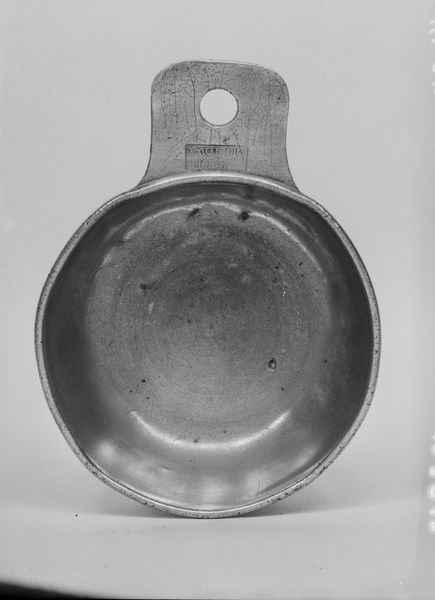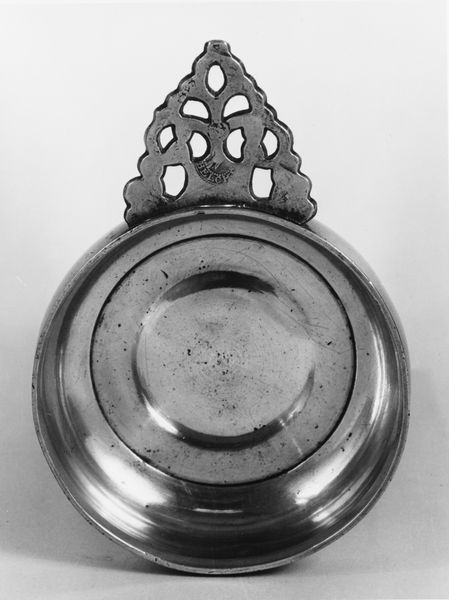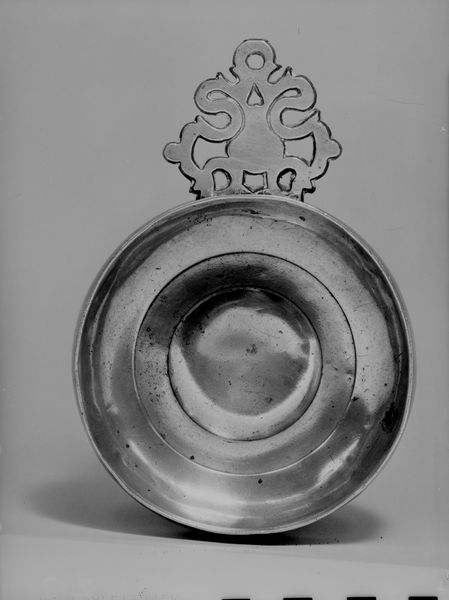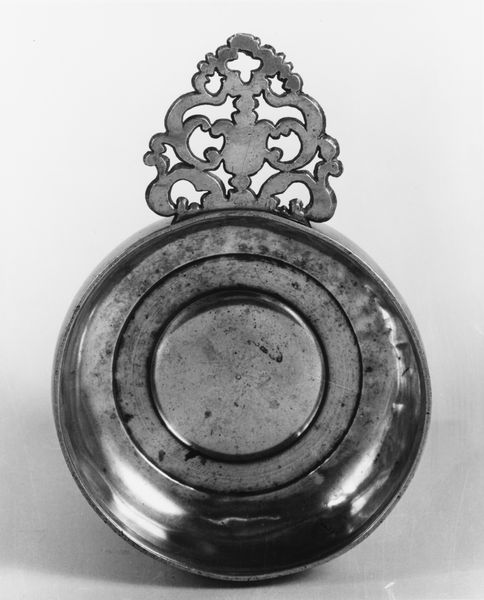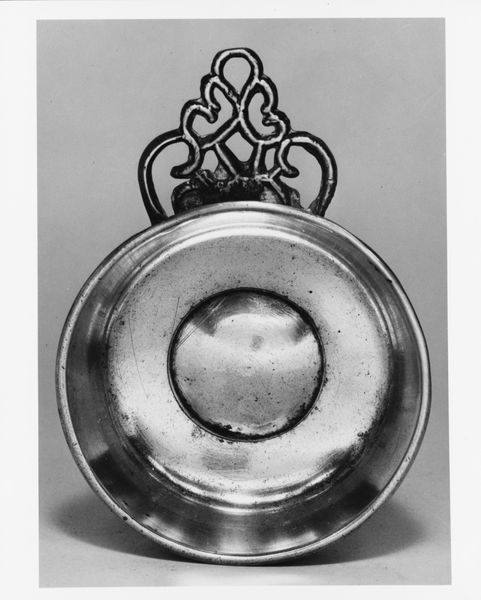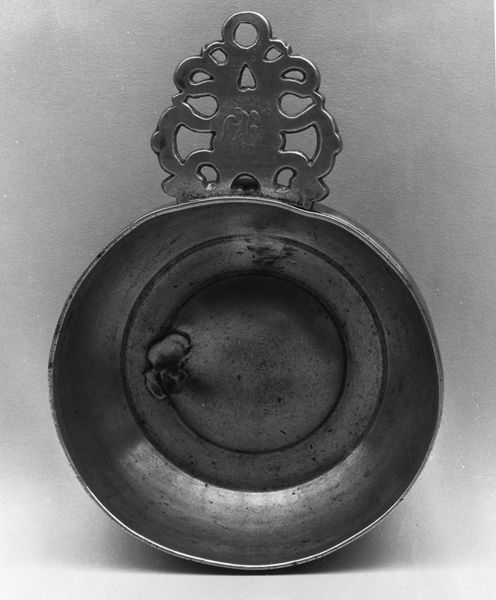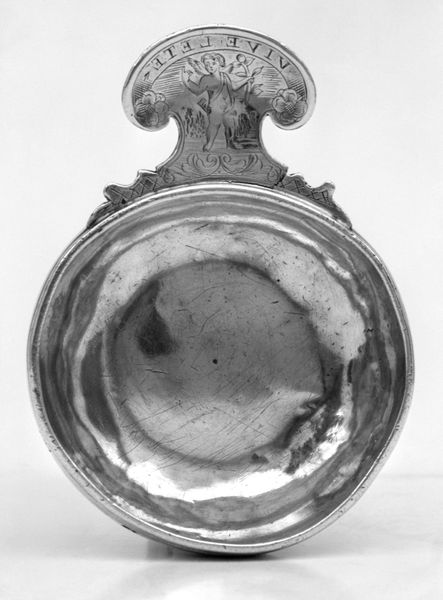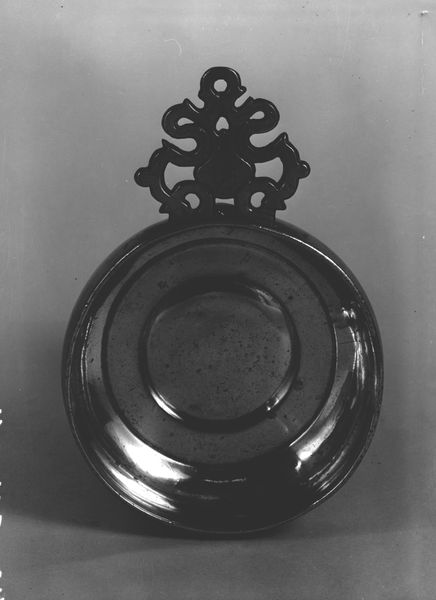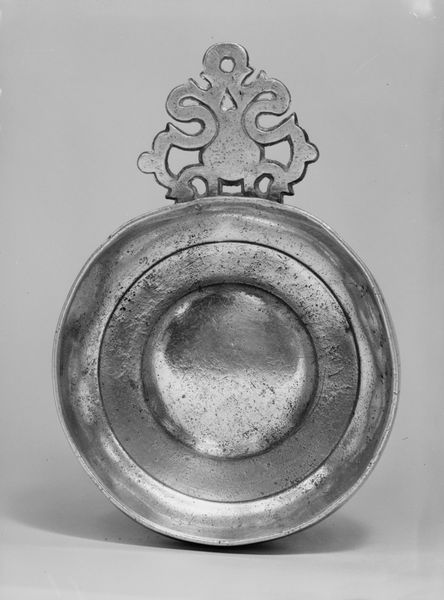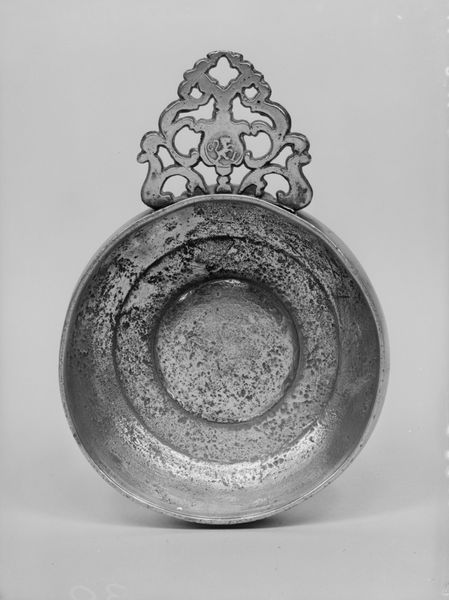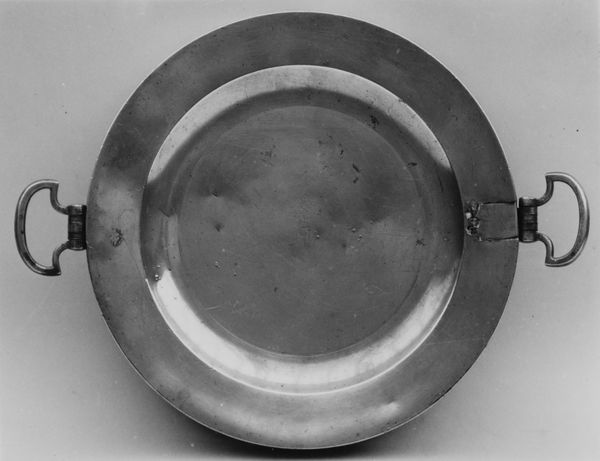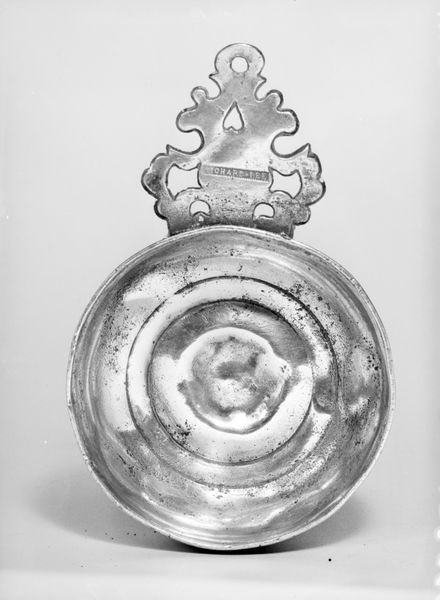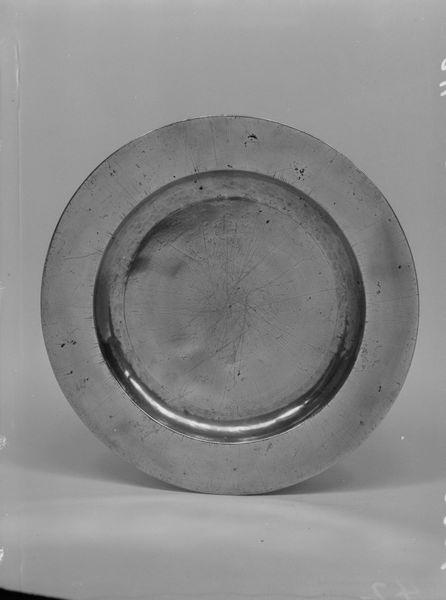
silver, metal, ceramic
#
silver
#
metal
#
ceramic
#
black and white theme
#
black and white
Dimensions: 1 7/8 x 7 3/4 x 5 1/2 in. (4.8 x 19.7 x 14 cm)
Copyright: Public Domain
Curator: Here we have a porringer, crafted between 1793 and 1800, currently held at the Metropolitan Museum of Art. Made from silver, this particular piece was created by Samuel Melville. Editor: It’s interesting. Stark, almost. The strong, reflective surfaces create a fascinating play of light and shadow that highlights its elegant shape, but I wonder about the austerity of the grayscale tones. Curator: The austerity you perceive might actually speak volumes about the social and economic context of the time. Silverware, even a humble porringer, indicated a level of domestic comfort and aspiration within a rising merchant class. Melville's work, situated as it is on the cusp of the 19th century, reminds us that decorative arts were potent symbols of social status and increasingly democratic tastes. Editor: That’s a sharp point about domestic comfort being reflected in metal. And yet, aesthetically, it's all about the purity of form. Look at the way the circular bowl sits so perfectly centered. Note how it's anchored by that distinct handle with the eye-catching symbol etched within, almost like an assertion of craft—function elevated by design. It has such an elemental appeal. Curator: Precisely. The craftsmanship, marked with the maker's symbol, demonstrates an intention not merely to produce a utilitarian object, but also to make a claim on the value of labor, a tangible piece within the broader marketplace. The choice of material as well - silver, instead of say, ceramic – points towards luxury becoming more widely accessible and desirable across social strata. Editor: But, that central concavity—almost hypnotic. And notice how the reflective planes subtly distort, hinting at a liquid surface, implying movement, interaction... Does that reflect anything from back in the days? Curator: Foodways, absolutely! We must remember that the porringer, beyond being just an item, has existed within ritualistic eating traditions that could even encompass performative or medicinal consumption practices based on socio-economic needs, perhaps a communal usage reflecting societal dynamics and values inherent back then. Editor: I see what you are saying. It’s beautiful how such a seemingly simple object can hold so much history, reflecting not just light, but the lives and times of those who once used it. Curator: Indeed, this artifact stands as a compelling piece of social and economic history captured in a form that still invites quiet aesthetic contemplation.
Comments
No comments
Be the first to comment and join the conversation on the ultimate creative platform.
